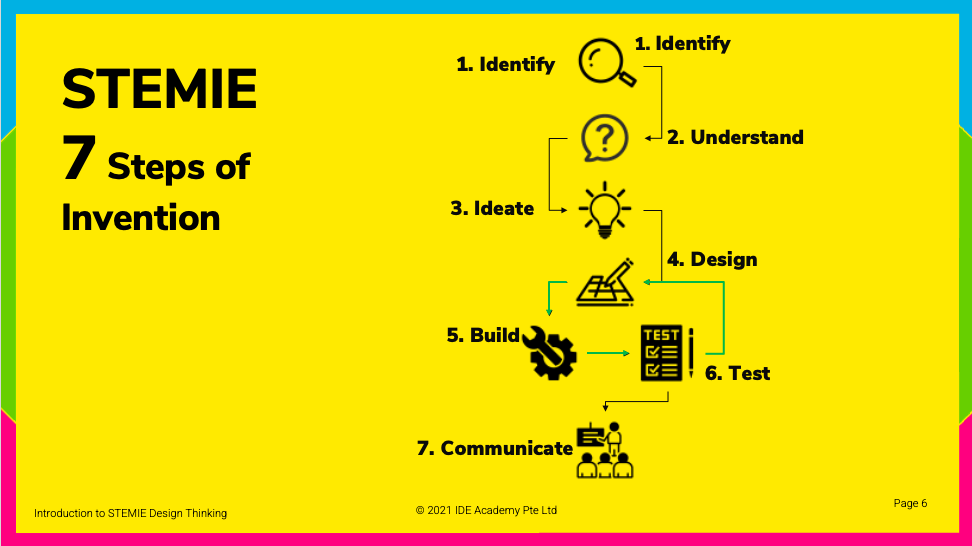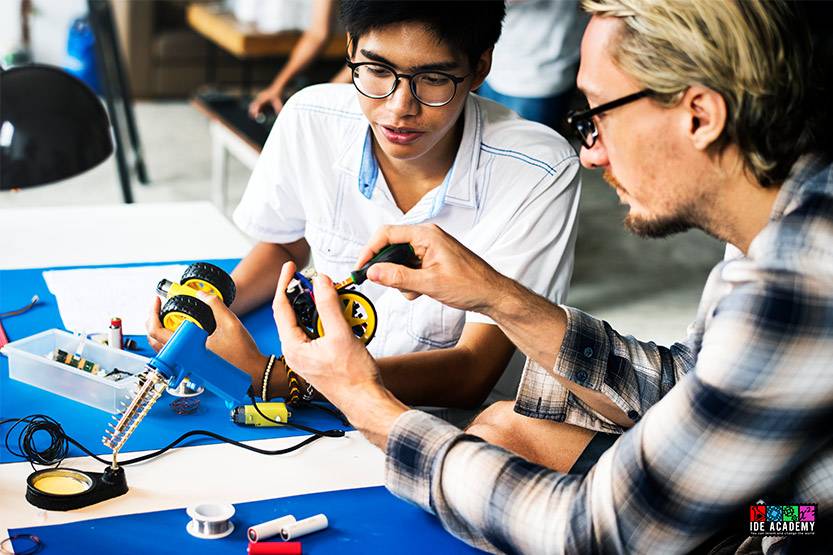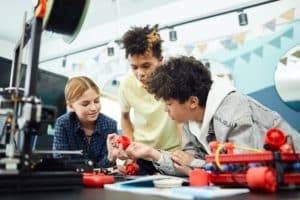You’ve probably heard about STEM education, a popular approach to learning subjects in an integrated manner. But is STEM enough on its own? How can invention education enhance STEM programmes?
Take a deep dive into the STEM curriculum, and you will notice that it shares similar teaching and learning approaches with invention education. In fact, invention education builds upon STEM knowledge by introducing the process of inventing, prototyping, and entrepreneurship. Let’s explore the correlations between the two programmes in this article.
What is STEM education?

STEM education is a multi-disciplinary approach to teaching that combines science, technology, engineering, and math. A recent iteration of the programme – STEAM – incorporates the arts to expand the limits and application of STEM education. Both curricula, at their core, are designed to develop practical skills and foster collaboration among students.
Instead of teaching the various disciplines as distinct and separate subjects, STEM education integrates them into a cohesive learning paradigm. This shift from the conventional approach to teaching helps students consider real-world applications and better equips them with the skill sets they need in their future careers.
What is invention education?

Invention Education is a pedagogical approach that incorporates the invention process into teaching and learning. When students understand the invention process and how it can be applied to solve problems, they become more engaged in their learning. It also provides a safe learning environment where students are encouraged to take risks and learn from failures.
This approach provides educators with a dynamic way to implement unique teaching methods – like project-based learning – in the classrooms. Through the curriculum, students increase their resilience and self-confidence and develop essential soft skills like leadership and empathy.
How are the two programmes correlated?

Invention education is designed to integrate with and enhance what teachers are currently doing in and out of schools. As a result, invention education is often paired with various related disciplines and educational approaches, such as STEM education, to provide students with opportunities to tap on what they learn in the classroom to identify and solve real-world issues.
Moreover, the aim of the programme is to provide a safe learning environment that encourages students to take risks, experience failure, and be comfortable in ambiguity. This is why many educators choose to integrate invention education into an existing STEM education curriculum.
With invention education, students draw on their knowledge of STEM-related disciplines and approaches to identify and solve real-world problems they have selected. Most of the time, the problems that they identify are close to their heart and may affect them directly. This approach enables students to witness the close relationship between STEM and their lives; students are, in turn, intrinsically motivated and dive deeper in their learning.
To add, invention projects are generally interdisciplinary in nature, providing numerous entry points and solution paths for students with various expertise, thereby reinforcing integrated learning.
STEMIE: Combining the best of both worlds
At IDE Academy, we recognise that many students participating in STEM classes for kids struggle to apply their knowledge and skills to real-world problems and situations. As such, we sought a new approach to bridge the gap between the learning of STEM concepts and practical applications to real-life situations.
This is where our STEMIE programme comes into the picture. Introducing invention (I) and entrepreneurship (E), the core tenets of invention education, to common STEM education empowers students to identify and solve real-world issues by focusing on developing the essential skill sets they require in the modern world. This is achieved through our patented STEMIE 7-step framework.

This structured framework serves as a guide for students while challenging them to think outside the box and solve complex problems. Educators facilitating this programme aim to promote student-driven inquiry and learning, thereby fostering an immersive and creative environment where students can make their own discoveries and connections.
As you can see, STEMIE — a programme that introduces invention and entrepreneurship to STEM education — changes the way educators and students approach teaching and learning. Through our programme, students will grow to be stronger creative and critical thinkers, empathetic problem-solver, and resilient contributors to society. If you are interested to learn more about our STEMIE programme, do not hesitate to contact us today!




